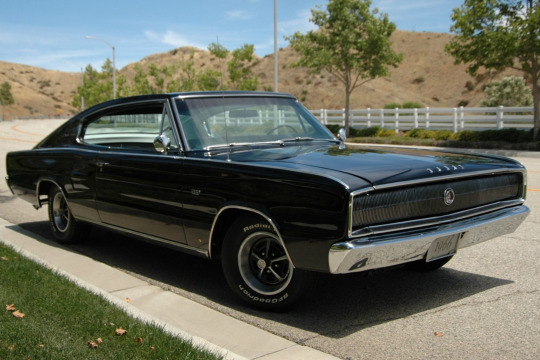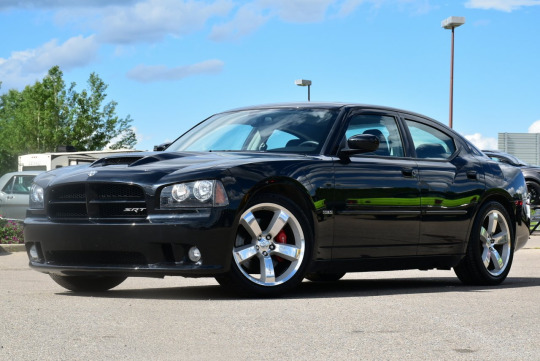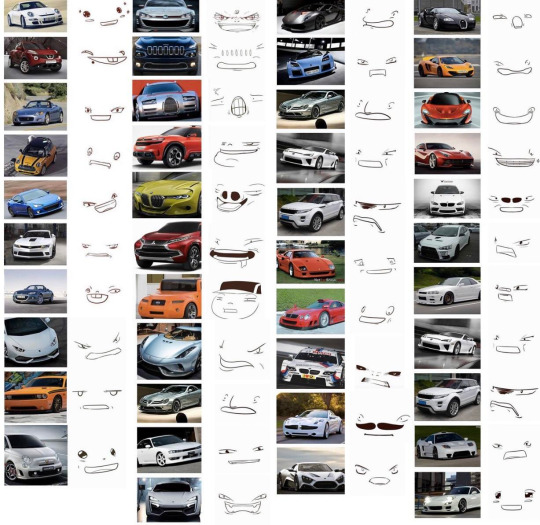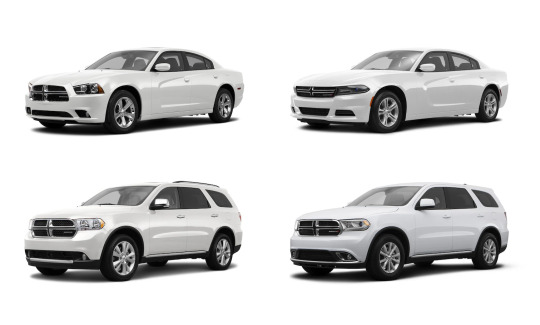#Functional Safety Products Market share
Note
why do usamerican anarchists even want to cook bathtub insulin like regulations on drug manufacturing just arent exploitative relationships
the only reason anyone ever does anything incorrectly is the profit motive. if you took away all safety regulations and threw a bunch of random people into a machine shop and asked them to build medical equipment they'd do so perfectly safely and correctly, because why would they Want to do otherwise?
i joke, obviously, but that's the thought process - it's fundamentally an extension of idealism: for a politics that otherwise completely ignores the material necessities and restrictions placed on political organisation and the measures they require to apply to the real world, in favour of, essentially 'if everyone just agrees with us our ideas will win', it shouldn't be that surprising that that extends to production.
in reality, of course, there are factors outside direct human control, and the implementation of safety regulations and inspections are an incredibly obvious and necessary measure - *but*, once you accept that, the question is then 'what good are safety regulations without any form of enforcement?', which, for anyone concerned with simply the task of bettering life for the working class, would prompt a response of 'oh, you're right, we'll need some form of enforcement, then.' for a lot of people, that's the end of their relationship with anarchism.
however, the underlying motives that generate these politics - as, in general, idealist political philosophies disconnected from reality don't simply spring up by themselves - aren't about the task of bettering life for the working class. fundamentally, the interests of these worldviews are those of the small-producer, the middle class: they promote a utopia where everyone is a small business owner (whether in a commune or a 'free market'), and, providing no real method to achieve these utopias, function mainly to drive these middle classes away from their character as labourers, and towards their privileges. the question of 'authority', a nebulous concept, has always been specifically the existence of any authority *over the small-producer's enterprise*. it's for *that* reason that, when the idea of 'authority' comes into contradiction with the task of improving the lives of the working people, some *do* decide that 'authority' is more important.
there is no such thing as a definite 'left' and 'right wing' - there are left wings and right wings of individual classes, but they both share more in class interest than they often do with their counterparts of other classes. libertarianism, in all its forms, is a middle class ideology, and shares its flaws - any jab against libertarians works just as well, 'who'll build the roads', 'would you need a driver's license', 'how will you ensure medicine is produced safely', etc.
when faced with these problems, people not married to the need to avoid 'authority' will simply accept the ideology is flawed - there are people who are pre-emptively 'anti-state', but fundamentally, their opponents are not 'pro-state', just practical. the anarchists are the only people coming to the table with a pre-existing, overriding position about 'authority' and the role of the state, and they're willing to abandon all practicalities to support it. functional regulations on medicine production *have* to be considered authoritarian, because that's the point of the ideology.
506 notes
·
View notes
Note
Do u know any reason why the Dodge Durango and Dodge Charger look kinda similar?
I see them on the streets all the time and I've noticed (at least the newer ones) have the same headlight and tail light design


Well, the short answer to that is "design language". The explanation of that short answer, however, is a bit more complicated than that, and is about why cars look the way they look - what makes them different, what makes them similar, what makes them change and how to tell them apart. So hop on under the Read More and come learn all that!
Design language is the sum of design rules and guidelines that make a brand's product range both distinct from others and coherent within itself. If you've ever recognized whose commercial it was, who printed the book, who manufactured the device, who designed the car, that was design language doing its job!
You know those "If [brand] made [thing]" renders you see out there? That's following a brand language: crossing what [thing] looks like, which is usually pretty well determined, with the much more nebulous concept of what [brand] looks like. Defining a design language is defining the answer to that second question.
So, let's look at the Dodge lineup in 2011 (the first year with both current Charger and current Durango).

There's a couple of key shared traits: the trapezoidal grille (facing downwards in 'friendly' cars and upwards in 'aggressive' ones), the small indentation in the middle of the hood, the single angular headlight housing containing two round lighting elements, and some more minute stuff.
Except one of these cars features none of that, because sometimes, when updating (and, especially, when bringing back) a model, the design traits of its ancestors are taken into account, and for the Challenger, Dodge's then-current design language was almost totally disregarded in favor of faithfulness to its 1970 ancestor.


Whereas the new Charger did the exact opposite, its 2006 revival being completely based on 2006 Dodge's design language, with extremely little left of the '60s original (I see the rear window shape and the beltline if I'm being Christmas generous). Of course, this already works towards the similarity we're getting at.


But the bulk of a car's design decisions are not about design language, but about the kind of car it has to be. A designer must contend with aerodynamics, safety requirements, customer needs and expectations, with the end result being that cars of the same segment will usually end up having the same basic proportions and largely overlapping silhouettes. See the cars below:

Sure, very different styles can produce a more angular or more soft outline (see the two cars in the background), but within the same era and segment many completely different cars will be almost indistinguishable between the wheels (see the two cars in the foreground).
So the most design freedom is usually found in lights and grilles, since those can be quite radically altered in shape and proportions without interfering much with functionality (unlike for example window shapes or rooflines), and even slight changes in them can alter the look and perception of a car, because we parse them similarly to faces, and thus they can make a car looks angry, sad, silly, goofy, or adorably gleeful.

So most often, the most distinctive features of a car -and by extension of a design language- are found in lights and grilles (the outline of the headlights, the inside arrangement, the grille's shape, proportion, pattern, etc.), with the rest of the car being shaped by general principles like "angular design", "simple, smooth lines" or the likes. So if you want to learn to recognize cars, lights and grilles are usually what you should focus on, as you need to be an expert for your average car's overall shape to tell you much more than its segment and decade (and perhaps market, but that's a longer conversation). That does explain, doesn't it, why lights and grilles are similar in Charger and Durango, two cars in very different segments designed to look aggressive in a distinctly Dodge way.

Let's exemplify this principle with three cars from the same segment, decade and country:
In the mid-00s, Audi introduced a tall, chrome-lined downward trapezoid grille that contained the number plate;
Mercedes had their classic grille -with the thick top chrome strip, small silver accents and the underlying middle line- and “merging circles” headlights;
BMWs still had their staple "kidney grilles" and their quad circular headlights now contained in a wide, flat shape with round, downwards curving edges.
So even when these brands made different cars in different segments, those key traits kept them perfectly recognizable as theirs.



As you see in Mercedes, a brand's designs can get very consistent - but it can also get very inconsistent, too. For one, you don't design for a manufacturer, you design for buyers, so the design will change with who the buyers are, what they want, what they're attracted to - and when that is pretty consistent within a brand you get a lineup like Volvo's...

...whereas if you have a brand whose buyers vary wildly in all metrics that matter, you get a lineup like Kia's.

(I love this picture because you keep thinking "Well those two look similar at least" and they keep turning out to be two versions of the same car.)
The lineup's styling is also going to be more cohesive the more precious brand recognition is for it: a Ferrari needs to look like a Ferrari because that's most of why people buy a Ferrari to begin with, whereas the last time a Skoda didn't look like a Skoda it literally called for advertising.
Design languages also change and evolve with time, of course, and that's an element at play in the observation that spurred this post: Charger and Durango look similar not just because they were designed with the intention of looking similar, but also because they were updated with the goal of remaining similar, and were made even more so by the use of similar solutions to modernize their looks.

You'll notice that this was just an update of lights, bumpers and grilles - and indeed, these are what's known as "facelifts": where a new generation is usually redesigned from the ground up or retains little more than the core structure, facelifts are instead intragenerational updates that stay clear of radical changes (at most, things like hood and fenders can get updated if new headlight shapes require it).
But as we covered, those are the parts that matter - so while something as little as a facelift can be absolutely impossible to notice...


(seriously, two of my neighbors have these and it took me weeks of seeing them side by side to notice differences)
...it can also be effective enough to carry a model into a new decade...


...ore even powerful enough to completely salvage a car's design, and by extension its fortunes.


However, of course, it can wield the opposite power just as well.

Christ.
Welp, no mistaking that for not a BMW now, is there.
But to be clear, while BMW's styling has completely gone down the gutter lately, don't get the impression that any brand at any time is beyond a miss in this regard.

So, to close, while there is merit to the claim that cars today seem all the same, as we've discussed that's only true -and for good reasons- when looking at them from a distance. But when a landscape seems depressingly monotonous, you just have to look closer. And so, getting closer, analyzing the traits that weren't dictated by their nature, the decisions that weren't made for them by external factors, looking at what of them was shaped by agency and not necessity, they will all reveal themselves to all be different and to all have a personality of their own (bland as it may be). And that personality will change over time: changes are normal within a life, and actually good - they're a sign that life has been long enough to outlive the trends and ideas that shaped it, and that it's open to the new ones that have blossomed since. Trying too hard to fit in or stand out or seeking change for its own sake without a clear direction can ruin something good, sure, but change can also be very positive: it can allow keeping up with the times, or even a transformation for the better that lets go of what didn't work and accentuates what was good - and often, when it's done right, the world rewards it. And none of this requires a distancing from heritage or family, or even identity. In fact, as seen with our two cars, change can make a family bond even tighter.
This year will bring lots of change. Here's hoping we all manage to make it change for the better.
So yeah, hopefully that answers your question, anonymous asker who may well have fucked off to Hollywood in the over month and a half it took me to get to this (whoopsie)!
Immense thanks to @ldub0775 for the effort and thought he joined me in pouring into this post, and to all followers reading this for sticking around into 2024 to witness that effort's fruits. Trust me, you will really like what's coming.
Links in blue are posts of mine about the topic in question: if you liked this post, you might like those - or the blog’s Discord server, linked in the pinned post!
#design language#car design#dodge charger#dodge durango#dodge challenger#audi#mercedes#bmw#volvo#kia#the great catchup
38 notes
·
View notes
Text
Starting Production🎉🥂
ZippOS is an alternate operating system for stand alone “spacial computing” devices. The goal of this project is to provide end users, who at their own discression, void their warranties to replace pre-packaged software bundled with their hardware. As the lead developer of ZippOS, and as an end user of a “spacial computer”, I am displeased with the current operating software, and the decisions of parent companies that distribute these products are inheriently unstable, brown-nosing share holders and consumers, and completely unaligned with the end users. As these devices are marketed as computers, I want to provide software for said computers as a choice for the end-users who feel the same as I do.
ZippOS will be a lighter(get it?), faster booting operating system built from scratch with Rust-Lang and some ARM/RISC-V assembly code to replace both the BIOS (ZIOS) and the operating system. The operating system’s goal is to have the same user functionality and multimedia multi-instancing in a mixed reality setting, citing BeOS/HaikuOS as inspiration. This operating system will have security and graceful degradation as the main focus for user safety because the main enemy for ZippOS is the companies who made the stock software it replaces on the end-user’s spacial computer. Users can also enjoy various stimulating options for navigating the software (i.e. “rolodex” style hub menus, table-top program/application storefront, “grabbing” and “throwing” programs/screens to be cast/mirrored to and from realspace and cyberspace, etc). ZippOS is a project software operating system under development, and currently has no plans to publicly publish to the open net, nor are there any current plans to open-source the software.
#ZippOS#Zipp-OS#Zipp OS#rustlang#rust-lang#operatingsystem#OS#linux#assembly language#assembly programming#riscv#arm64#mixed reality#virtual reality
7 notes
·
View notes
Text
Business Operations Plan for Eco Green Candles
Eco Green Candles is a sustainable candle business located in Greater Sudbury, Ontario, Canada. Our mission is to provide environmentally friendly candles made from natural ingredients and packaged using eco-conscious materials. This operations plan outlines the key strategies and processes we will implement to ensure the smooth functioning of our business.
Production Process
Ingredient Sourcing: We will source high-quality natural waxes such as soy or beeswax, along with essential oils for fragrance, from trusted suppliers with a commitment to sustainability.
Candle Making: Our candles will be handcrafted in small batches to maintain quality and consistency. We will utilize environmentally friendly production techniques and minimize waste throughout the manufacturing process.
Packaging: Eco Green Candles will be packaged using biodegradable and recyclable materials to reduce environmental impact. We will work with suppliers who share our commitment to sustainability.
Inventory Management
Stocking Levels: We will maintain optimal inventory levels to meet customer demand while minimizing excess stock. Regular inventory assessments will be conducted to ensure efficient stock turnover.
Quality Control: All incoming materials and finished products will undergo rigorous quality control checks to ensure adherence to our high standards of quality and sustainability.
Sales and Distribution
Sales Channels: Eco Green Candles will be sold through multiple channels, including:
Online store
Local retailers specializing in eco-friendly products
Farmers' markets and craft fairs
Distribution Strategy: We will establish partnerships with local courier services for efficient and eco-friendly delivery of online orders. For wholesale orders, we will work closely with retailers to ensure timely delivery and replenishment of stock.
Marketing and Promotion
Brand Identity: We will develop a strong brand identity centered around our commitment to sustainability and environmental stewardship.
Online Presence: Our website and social media channels will serve as platforms to showcase our products, share our story, and engage with customers.
Promotional Activities: We will participate in community events, collaborate with local influencers, and offer promotions to attract new customers and retain existing ones.
Customer Service
Communication: We will maintain open and transparent communication channels with our customers, responding promptly to inquiries and addressing any concerns or feedback.
Customer Education: Eco Green Candles will provide resources and information to educate customers about the benefits of using eco-friendly candles and the importance of sustainability.
Operational Efficiency
Workflow Optimization: We will continuously review and streamline our operational processes to maximize efficiency and minimize waste.
Technology Integration: We will leverage technology solutions such as inventory management software and automated systems to streamline operations and improve productivity.
Financial Management
Budgeting: We will develop a detailed budget outlining projected expenses and revenue streams, allowing us to effectively manage our financial resources.
Profitability Analysis: Regular financial analysis will be conducted to assess the profitability of our products and identify areas for improvement.
Regulatory Compliance
Product Safety: We will ensure compliance with all relevant regulations and standards for the manufacturing and sale of candles, including safety labeling and product testing.
Environmental Regulations: Eco Green Candles will adhere to local and national environmental regulations regarding waste disposal, emissions, and sustainability practices.
Conclusion
The successful operation of Eco Green Candles relies on the effective implementation of the strategies outlined in this plan. By prioritizing sustainability, quality, and customer satisfaction, we aim to establish Eco Green Candles as a trusted provider of environmentally friendly candles in Greater Sudbury and beyond.
Thank you for your support as we embark on this journey to promote environmental stewardship through our business endeavors.
2 notes
·
View notes
Text
I've been watching a lot of TV this month as I finish my work and am plagued with thoughts about the state of entertainment. I saw a good post about advancements in YouTube ads, but I can't find it, so I wanted to write out my own thoughts in case I need this later.
This is the only site I will ever fully trust, despite the recent events in censorship. I am grateful for the opportunity to see only what I requested to see - with the odd ad here and there - in the order and at the pace which the author intended for me to see it.
I recently upgraded my gaming and TV setup and have been disappointed by the ever-presence of ads in those products I already purchased. Custom backgrounds on PS consoles have been replaced with forced exposure to ads and an ugly grey backdrop. My TV opens to a slew of ads 'for you' rather than the channels I actually own and enjoy watching. Of course I could go offline on both these machines and lose access to the social features. These private spaces have been invaded by The Corporations. Yes I played Cyberpunk (the pen and paper RPG).
I have been on the internet long enough to have experienced Google search, YouTube and the birth of social media at its finest. When your online hobbies and interests were detached from your IRL persona. When only weirdos and artists had substantial online presence. I had a robust internet friendgroup via a UK site related to my MMO of choice. Some of us met IRL with the approval of our parents and continued to be friends through life's ups and downs.
We had internet safety courses at school. We understood how to organize our virtual workspaces, because that functionality was transparent to us and adults knew more about the devices than kids did. We were taught WikiPedia was unreliable because of its open-source nature, and now the tables have turned making it the only source for information unmotivated by profit. We knew to ask the 'who/what/when/where/why' questions about online resources. I followed all the drama this year about YT plagiarism and I honestly think it's simpler than people wanting to take advantage of their audience. I do not think new internet users can always discern the difference between information and entertainment. Are you making this video essay because you have something new to say about the topic? Or because you want to entertain your fans while you bond over a shared interest? There is room for both, but the lines between them are too blurry.
Now I work as a tech educator. Most kids don't understand where the information they see online is coming from. Ads are disguised as posts on your social media of choice. Search has been replaced with AI summaries that funnel information into a narrow perspective on the topic. They are integrated into your technology and need to be turned off with each update.
My time is precious. My attention and energy are important resources. I will not be swayed by something that overtly preys on my attention, time and energy. I will always respond to ads with resentment because I know how to discern them from actual online interactions. Some people don't know to do that. Of course AI content would flourish in a market where it is so easy to invade users' thoughts.
Let's all help each other out - Tumblr is a great space for the sharing of knowledge. I hope I can look at this post after the trend has changed and think more positive thoughts :D
Here's a pic of my cat watching me watch YT while typing this. Have a great summer!

4 notes
·
View notes
Text
The Fine Art of Custom Weed Bags: Where Style Meets Substance!

In the blossoming world of cannabis, packaging has transcended mere functionality. It's now a canvas for creativity, a guardian of quality, and a beacon of brand identity. Enter the realm of custom weed bags, where style and substance meld to create a packaging experience that's as delightful as it is effective. Let's embark on a journey through the artistry of custom weed bags and uncover how they're redefining the aesthetics of cannabis packaging.
Painting Your Brand's Portrait
Custom printed weed bags are not just vessels; they're a reflection of your brand's soul. With the freedom to tailor every facet of the design, you can ensure your packaging is a true representation of your brand's ethos and aesthetic. Whether you choose a design that's boldly vibrant or elegantly understated, custom weed bags offer a palette for you to paint a picture that captivates your audience and sets you apart in a crowded marketplace.
Key Highlights:
Unified Brand Image: Create a consistent look across all your offerings.
Unique Aesthetic: Stand out with weed packaging that's distinctively yours.
Audience Resonance: Design with your target market in mind for maximum appeal.
Safeguarding Your Green Treasures
At their core, custom cannabis bags serve to protect the precious contents within. Armed with features like hermetic seals and humidity control, these weed bags ensure that your cannabis remains as fresh and potent as the day it was harvested. By preserving the essence of your product, custom bags elevate the consumer experience, making every encounter with your brand a memorable one.
Key Highlights:
Hermetic Seals: Lock in freshness and keep contaminants out.
Humidity Control: Keep mold at bay and preserve the ideal moisture level.
Aroma Preservation: Maintain the discreetness and integrity of the scent.
Navigating the Legal Maze
In the intricate tapestry of cannabis regulations, compliance is paramount. Custom weed mylar bags can be crafted with child-resistant mechanisms and other safety features, ensuring your products meet the rigorous standards set by authorities. This commitment to safety not only protects your business but also reinforces your dedication to your customers' well-being.
Key Highlights:
Child-Resistant Features: Protect the young ones with secure designs.
Adherence to Regulations: Ensure your marijuana packaging meets all legal requirements.
Building Trust: Demonstrate your commitment to consumer safety.
Unleashing Your Brand's Narrative
Custom cannabis bags are more than mere containers; they're storytelling vessels. They provide a stage for imaginative designs and compelling narratives that captivate potential customers. By weaving your brand's story into your packaging, you can connect with your audience on an emotional level, transforming each bag into a chapter of your brand's journey.
Key Highlights:
Captivating Designs: Draw eyes with visually stunning dispensary packaging.
Narrative Packaging: Use your cannabis bags to share your brand's story.
Emotional Connection: Engage your audience with meaningful messaging.
Championing Environmental Stewardship
In an era where sustainability is revered, customized weed bags offer a path to eco-friendly cannabis packaging. By opting for materials that are biodegradable or sourced sustainably, you can minimize your ecological footprint and resonate with consumers who value environmental responsibility.
Key Highlights:
Sustainable Materials: Choose weed packaging that's kind to the planet.
Reducing Impact: Lessen your environmental footprint with conscious choices.
Attracting Eco-Conscious Consumers: Appeal to those who prioritize the planet's well-being.
Conclusion
The artistry of custom weed bags is a testament to the innovation and creativity flourishing in the cannabis industry. By blending style with functionality, these bags offer a packaging solution that not only safeguards your product but also amplifies your brand's presence and connects with your customers. As the cannabis landscape continues to evolve, the elegance and effectiveness of custom weed packs will undoubtedly play a pivotal role in shaping the future of marijuana packaging.
3 notes
·
View notes
Text
It didn't take long. Just months after OpenAI’s ChatGPT chatbot upended the startup economy, cybercriminals and hackers are claiming to have created their own versions of the text-generating technology. The systems could, theoretically at least, supercharge criminals’ ability to write malware or phishing emails that trick people into handing over their login information.
Since the start of July, criminals posting on dark-web forums and marketplaces have been touting two large language models (LLMs) they say they’ve produced. The systems, which are said to mimic the functionalities of ChatGPT and Google’s Bard, generate text to answer the questions or prompts users enter. But unlike the LLMs made by legitimate companies, these chatbots are marketed for illegal activities.
There are outstanding questions about the authenticity of the chatbots. Cybercriminals are not exactly trustworthy characters, and there remains the possibility that they’re trying to make a quick buck by scamming each other. Despite this, the developments come at a time when scammers are exploiting the hype of generative AI for their own advantage.
In recent weeks, two chatbots have been advertised on dark-web forums—WormGPT and FraudGPT—according to security researchers monitoring the activity. The LLMs developed by large tech companies, such as Google, Microsoft, and OpenAI, have a number of guardrails and safety measures in place to stop them from being misused. If you ask them to generate malware or write hate speech, they’ll generally refuse.
The shady LLMs claim to strip away any kind of safety protections or ethical barriers. WormGPT was first spotted by independent cybersecurity researcher Daniel Kelley, who worked with security firm SlashNext to detail the findings. WormGPT’s developers claim the tool offers an unlimited character count and code formatting. “The AI models are notably useful for phishing, particularly as they lower the entry barriers for many novice cybercriminals,” Kelley says in an email. “Many people argue that most cybercriminals can compose an email in English, but this isn’t necessarily true for many scammers.”
In a test of the system, Kelley writes, it was asked to produce an email that could be used as part of a business email compromise scam, with a purported CEO writing to an account manager to say an urgent payment was needed. “The results were unsettling,” Kelley wrote in the research. The system produced “an email that was not only remarkably persuasive but also strategically cunning.”
In forum posts, the WormGPT developer claimed the system was built on the GPTJ language model, an open source language model that was developed by AI research group EleutherAI in 2021. They refused to disclose the data sets they used to train the system, according to Kelley’s research.
Meanwhile, the creator of FraudGPT has claimed loftier potential for their system, suggesting it could “create undetectable malware” and find leaks and vulnerabilities, as well as crafting text that could be used in online scams. Rakesh Krishnan, the senior threat analyst at security firm Netenrich who found FraudGPT, says the person selling it has advertised the product on multiple dark-web forums and also on Telegram channels.
Krishnan says the creator of the system published a video appearing to show the chatbot operating and generating a scammy email. They were also trying to sell access to the system for $200 per month, or a yearly cost of $1,700. Krishnan says that in conversations with the developer behind FraudGPT, they claimed to have a few hundred subscribers and pushed for a sale, while the WormGPT creator appeared to have received payments into a cryptocurrency wallet address they shared. “All these projects are in their infancy,” Krishnan says. He adds, “we haven’t got much feedback” into whether people are purchasing or using the systems.
While those touting the chatbots claim they exist, it is hard to verify the makeup and legitimacy of the systems. Cybercriminal scammers are known to scam other scammers, with previous research showing that they frequently try to rip each other off, don’t provide what they claim they are selling, and offer bad customer service. Sergey Shykevich, a threat intelligence group manager at security firm Check Point, says there are some hints that people are using WormGTP. “It seems there is a real tool,” Shykevich says. The seller behind the tool is “relatively reliable” and has a history on cybercrime forums, he says.
There are more than 100 responses to one post about the WormGPT, Shykevich says, although some of these say the seller isn’t very responsive to their inquiries and others “weren’t very excited” about the system. Shykevich is less convinced about FraudGPT’s authenticity—the seller has also claimed to have systems called DarkBard and DarkBert. Shykevich says some of the posts from the seller were removed from the forums. Either way, the Check Point researcher says there’s no sign that any of the systems are more capable than ChatGPT, Bard, or other commercial LLMs.
Kelley says he believes claims about the malicious LLMs created so far are “slightly overexaggerated.” But he adds, “this is not necessarily different from what legitimate businesses do in the real world.”
Despite questions about the systems, it isn’t a surprise that cybercriminals want to get in on the LLM boom. The FBI has warned that cybercriminals are looking at using generative AI in their work, and European law enforcement agency Europol has issued a similar warning. The law enforcement agencies say LLMs could help cybercriminals with fraud, impersonation, and other social engineering faster than before and also improve their written English.
Whenever any new product, service, or event gains public attention—from the Barbie movie to the Covid-19 pandemic—scammers rush to include it in their hacking artillery. So far, scammers have tricked people into downloading password-stealing malware through fake ads for ChatGPT, Bard, Midjourney, and other generative AI systems on Facebook.
Researchers at security firm Sophos have spotted the operators of pig butchering and romance scams accidentally including generated text in their messages—“As a language model of ‘me’ I don’t have feelings or emotions like humans do,” one message said. And hackers have also been stealing tokens to provide them with access to OpenAI’s API and access to the chatbot at scale.
In his WormGPT report, Kelley notes that cybercriminals are often sharing jailbreaks that allow people to bypass the safety restrictions put in place by the makers of popular LLMs. But even unconstrained versions of these models may, thankfully, not be that useful for cybercriminals in their current form.
Shykevich, the Check Point researcher, says that even when he has seen cybercriminals try to use public models, they haven’t been effective. They can “create ransomware strains, info stealers, but no better than even an average developer,” he says. However, those on the cybercrime forums are still talking about making their own clones, Shykevich says, and they’re only going to get better at using the systems. So be careful what you click.
8 notes
·
View notes
Text
US Industrial Boilers Market Size, Share And Growth Analysis
Industrial boilers are critical components in various manufacturing processes, providing a reliable source of heat or steam for a wide range of industrial applications in the United States. These boilers are used in industries such as chemical processing, food and beverage production, pharmaceuticals, refineries, and power generation. They come in various types, including fire-tube boilers, water-tube boilers, and electric boilers, each designed to meet specific industrial needs. The primary function of industrial boilers is to efficiently generate heat or steam to facilitate various industrial processes, contributing to the overall productivity and energy efficiency of manufacturing operations.
𝐆𝐞𝐭 𝐒𝐚𝐦𝐩𝐥𝐞 𝐑𝐞𝐩𝐨𝐫𝐭 𝐏𝐃𝐅: https://www.transparencymarketresearch.com/sample/sample.php?flag=S&rep_id=9131
The demand for industrial boilers in the United States is influenced by several factors, including economic growth, regulatory requirements, and technological advancements. As industries expand and modernize, the need for efficient and environmentally compliant boiler systems has increased. Stringent environmental regulations have prompted industries to replace older, less efficient boilers with newer, cleaner technologies. The adoption of advanced combustion and control systems in industrial boilers has become crucial in meeting emissions standards and optimizing energy utilization. Additionally, the U.S. government's focus on energy efficiency and sustainability is driving industries to invest in modern industrial boilers to reduce energy consumption and operational costs.
The demand for industrial boilers in the United States is also influenced by the growth of key end-user industries. Sectors such as chemical processing, food and beverage, and power generation have a substantial impact on the demand for industrial boilers. For instance, the chemical industry relies on industrial boilers for various processes such as chemical reactions and distillation. Similarly, the food and beverage industry utilizes boilers for cooking, pasteurization, and sterilization. The expansion of these industries, coupled with the need for reliable and efficient heating solutions, contributes to the ongoing demand for industrial boilers in the U.S. Technological advancements are playing a significant role in shaping the demand for industrial boilers. The integration of digital controls, sensors, and advanced monitoring systems enhances the efficiency and safety of industrial boiler operations. Smart boilers with features like remote monitoring, predictive maintenance, and real-time performance optimization are gaining traction in the market. This trend aligns with the broader industrial shift towards Industry 4.0 principles, where connectivity and data-driven insights play a pivotal role in optimizing manufacturing processes. As industries in the United States continue to prioritize efficiency, safety, and sustainability, the demand for technologically advanced industrial boilers is expected to persist, driving innovation in the sector.
2 notes
·
View notes
Text
The Expanding Realm of the Underwater Camera Market: Submerged Snapshots
The underwater camera market is experiencing steady growth due to increased interest in underwater photography and videography among enthusiasts, professionals, and adventurers. An underwater camera is a camera device that can be used to capture images and videos underwater. It can be used for shoots as one is swimming, snorkeling, or with a remotely operated underwater vehicle. Some of these cameras are even automated and can be easily lowered from the water surface to capture images and videos on their own.
There are specific cameras designed for use underwater, and they include modern waterproof digital cameras. However, cameras designed for dry work can also be used for underwater shots but only with additional housings for protection against water and pressure. Rising technological advancements in the camera industry, coupled with increased usage of this camera across sectors, increased focus on safety and security, and many other factors are anticipated to increase the sales of underwater cameras.
The growing popularity of adventure travel and water sports activities, such as scuba diving, snorkeling, and underwater exploration, contributed to the increased demand for underwater cameras. Moreover, the influence of social media platforms like Instagram, YouTube, and TikTok encouraged users to capture high-quality underwater content for sharing and engagement, further driving the demand for underwater cameras. In current times, technological advancements are seen on almost a daily basis. The effect of technological advancements is visible in the way various devices function. Likewise, owing to technological advancements, underwater cameras have started operating with higher precision.
The start-ups operating in the underwater camera market are looking at ways to make optimum utilization of power by focusing on smart low-power motion-sensing cameras. Apart from this, start-ups are working on several ideas. With a focus on improving the performance of the cameras, the key players are mainly focusing on sensors to improve the overall sensitivity of the device. Key players have adopted various strategies, such as product portfolio expansion, mergers & acquisitions, agreements, geographical expansion, and collaborations, to increase their market penetration and strengthen their foothold in the market.
2 notes
·
View notes
Text
Remade @jv 's post because it made every point that I wanted to share perfectly. He (completely understandably) turned off reblogs, but I wanted all the information out there in one place. (I didn't just screenshot it because I want this to be more easy to search for.)

The following text is from JV:
TLDR: most of the current staff is being moved to other automattic divisions and Tumblr will be run by an skeleton crew
Some clarity:
Happiness -> Support
T&S -> Trust & Safety
Bumblr -> Product development, editorial, marketing etc.
The "reduction" don't affect Happiness or T&S because they weren't "Tumblr" to begin with, they are a different divisions within automattic that are cross-product (cover all the products from the company). So if automattic has (I have no idea of the real numbers numbers) 100 people working on T&S, maybe half of those were working on tumblr until now. But if tomorrow they decide to left only 10 of them working of tumblr, they don't need to move the other 40 anywhere: they are still in the same team, just looking at a different JIRA board every morning. Same with Happiness. So the fact that there are no changes in those divisions doesn't have to mean there won't be less people on them working on tumblr.
Technically, people are not being fired over this (though some of them had been, today), they will just be moved to other projects (WordPress, WooCom, Day One, etc).
The following excerpts are from @dualumina 's reblog:
For folks not incredibly tech/business savvy; this basically means the website will still exist, it will still be functional for the most part. However you may find that fun updates won't be as frequent, or full on stop occurring. Reports for harassment or bugs might be slow to reply, or you may receive no reply at all (from a human, automatic messages are still a thing) depending on the situation.
The wording states that the majority of the 139 staff in Bumblr will be moved to other projects. That means at max 69 people will stay while at least 70 will leave the project. That's at bare minimum cutting the team in half.
You should definitely save anything important just incase; less people means sometimes accidents will happen more frequently. Share your contact info with anyone you want to keep in contact with.
Prepare for the worst but hope for the best.
#current events#text#link#tech#photo#tumblr#tumblr meta#personal#words#and to jv and dualumina feel free to tell me to take this down and i will#but i really liked the way the info here was laid out#also please leave the original op alone dont bother him because his old job did something
2 notes
·
View notes
Text
Global Pickup Power Window Motor 12V Market Research and Future Strategy Analysis 2024 - 2031
The global pickup power window motor 12V market is witnessing substantial growth, driven by rising vehicle production and increasing consumer demand for comfort and convenience features in automobiles. This article explores the market's dynamics, key trends, challenges, and future outlook.

Overview of the Pickup Power Window Motor Market
The global pickup power window motor 12V market is poised for robust growth as the automotive industry evolves to meet consumer demands for convenience and comfort. While challenges such as competition and regulatory compliance exist
What is a Power Window Motor?
A power window motor is an electric device that powers the movement of a vehicle’s windows up and down. The 12V variant is commonly used in pickup trucks, allowing for efficient operation with the vehicle’s electrical system. These motors are integral to providing convenience and enhancing the user experience.
Historical Context
The introduction of power windows revolutionized vehicle design and functionality in the late 20th century. Initially found in luxury cars, power windows have become standard in most modern vehicles, including pickups, reflecting consumer demand for enhanced comfort and convenience.
Market Dynamics
Key Drivers
Increasing Vehicle Production: The growth in the automotive sector, particularly in developing economies, is driving demand for power window motors, including 12V variants for pickups.
Consumer Preference for Comfort Features: Modern consumers prioritize comfort and convenience in vehicles, which has led to an increased adoption of power window systems.
Technological Advancements: Innovations in motor technology, such as improved efficiency and durability, are making power window motors more appealing to manufacturers and consumers.
Challenges
High Competition: The market is characterized by intense competition among manufacturers, leading to price wars that can affect profitability.
Regulatory Standards: Compliance with stringent automotive regulations and standards can pose challenges for manufacturers, particularly in terms of safety and environmental concerns.
Market Saturation: In mature markets, the prevalence of power window systems in vehicles can lead to saturation, limiting growth potential.
Market Segmentation
By Vehicle Type
Light-Duty Pickups: The majority of demand for 12V power window motors comes from light-duty pickups, where convenience features are increasingly expected.
Heavy-Duty Pickups: While less common, heavy-duty pickups are also equipped with power window systems, though the market share is smaller compared to light-duty models.
By Distribution Channel
OEM (Original Equipment Manufacturer): OEMs remain the primary distribution channel, as manufacturers integrate power window motors during vehicle assembly.
Aftermarket: The aftermarket segment is growing, driven by replacement needs and consumer preference for upgrades.
By Region
North America: The North American market is a significant contributor due to high vehicle ownership rates and consumer demand for comfort features in pickups.
Europe: European markets are increasingly adopting power window motors as part of evolving automotive trends focused on comfort and technology.
Asia-Pacific: Rapid urbanization and rising disposable incomes in countries like China and India are driving substantial growth in this region.
Competitive Landscape
Key Players
Denso Corporation: A leading global supplier of automotive components, Denso manufactures high-quality power window motors known for their reliability.
Robert Bosch GmbH: Bosch is a major player in the automotive components market, offering advanced power window solutions with a focus on efficiency.
Magna International Inc.: As a prominent automotive supplier, Magna provides a range of window lift systems, including 12V power window motors for pickups.
Recent Developments
The pickup power window motor market is witnessing continuous innovation, with manufacturers focusing on enhancing motor efficiency and durability. Advanced technologies such as brushless motors and integrated control systems are becoming increasingly common.
Future Outlook
Growth Projections
The global pickup power window motor 12V market is expected to see significant growth in the coming years, driven by the continued expansion of the automotive sector and increasing consumer expectations for vehicle features.
Emerging Trends
Smart Technology Integration: The incorporation of smart technologies, such as connectivity features and automated window controls, is expected to shape future product offerings.
Sustainability Initiatives: Manufacturers are likely to focus on sustainable practices, including the use of eco-friendly materials and energy-efficient designs.
Customization and Personalization: As consumers seek more personalized vehicle experiences, the demand for customizable power window solutions is anticipated to rise.
Conclusion
The global pickup power window motor 12V market is poised for robust growth as the automotive industry evolves to meet consumer demands for convenience and comfort. While challenges such as competition and regulatory compliance exist, the overall outlook remains positive. With continuous technological advancements and increasing vehicle production, the market is set to thrive in the coming years.
#Global Pickup Power Window Motor 12V Market Size#Global Pickup Power Window Motor 12V Market Trend#Global Pickup Power Window Motor 12V Market Growth
0 notes
Text
Indian Refrigerator Market: Trends and Future Outlook
The Indian refrigerator market is poised for significant growth, driven by urbanization, rising disposable incomes, and changing consumer lifestyles. Expected to reach USD 8.14 billion by 2029, with a CAGR of 9.63% from USD 5.14 billion in 2022, this growth reflects evolving consumer preferences and technological advancements. This article explores key trends, market drivers, segmentation, recent developments, and the competitive landscape shaping the refrigerator industry in India.
Key Market Drivers
Urbanization: Rapid urbanization is leading to increased investments in modern kitchen appliances. By 2025, urban areas are expected to account for 40% of the country’s population, driving demand for essential household appliances like refrigerators.
Rising Disposable Income: With the Indian economy projected to grow at 6.5% annually, rising disposable incomes are leading to higher spending on durable goods, particularly energy-efficient and high-capacity refrigerators.
Health and Food Safety Awareness: Growing health consciousness is prompting consumers to invest in refrigeration solutions that preserve food quality and safety, leading to increased demand for advanced cooling technologies.
Market Segmentation
By Product Type:
Top Freezer Refrigerators: Dominating the market due to affordability and functionality.
Side-by-Side Refrigerators: Gaining traction among affluent consumers for their modern aesthetics and advanced features.
French Door Refrigerators: Increasingly popular for spacious designs and convenience.
By Distribution Channel:
Offline Retail: Traditional retailers and appliance stores account for approximately 70% of total sales.
Online Retail: Rapidly growing, projected to reach 30% market share as consumers seek convenience and competitive pricing.
Recent Developments
Sustainability Initiatives: Leading brands like LG and Whirlpool are adopting sustainable practices in manufacturing and product design, focusing on recyclable materials and energy-efficient technologies.
Smart Refrigerators Launches: Major players are introducing smart refrigerators equipped with IoT technology, allowing users to monitor and manage food inventory via smartphone apps.
Government Policies: The Indian government is encouraging the adoption of energy-efficient appliances through initiatives like the BEE Star Rating Program, which promotes energy conservation.
Market Analysis
The Indian refrigerator market is competitive, with key players like LG, Samsung, and Whirlpool vying for market share. Local brands are also gaining prominence by focusing on affordability and innovative features. Price wars and promotional offers are common, particularly during festive seasons.
Consumer Trends
Demand for Energy Efficiency: According to Mordor Intelligence, 80% of buyers consider energy ratings before purchasing, indicating a strong preference for energy-efficient models.
Focus on Design: Manufacturers are investing in sleek designs and customizable options to cater to modern kitchen aesthetics.
Health-Conscious Choices: Refrigerators with advanced cooling technology are increasingly sought after, prioritizing food preservation and safety.
Regional Insights
The Southern region leads in refrigerator sales, driven by higher disposable incomes and a preference for modern appliances. The Northern region is witnessing growth due to increasing urbanization and changing consumer lifestyles.
Challenges and Opportunities
Despite the market's expansion, challenges such as supply chain disruptions and rising raw material costs persist. However, opportunities lie in the premium segment, with growing demand for smart refrigerators, prompting manufacturers to explore partnerships with tech companies.
Conclusion
The refrigerator market in India is on a growth trajectory, influenced by urbanization, rising incomes, and evolving consumer preferences. Companies must focus on innovation, energy efficiency, and effective marketing strategies to capture market share in this competitive landscape.
#refrigerator market in India#refrigerator market trends in India#refrigerator market share in India#mordorintelligence
0 notes
Text
Coating the Future: Innovative Solutions in Packaging Coatings

The global packaging coatings market is on a steady growth path, driven by increasing demand for durable, protective, and sustainable packaging solutions. According to the report, the market is projected to grow at a compound annual growth rate (CAGR) of over 4% during the forecast period of 2022-2028. The market, valued at approximately USD 3.5 billion in 2022, is expected to reach nearly USD 5 billion by 2028.
What Are Packaging Coatings?
Packaging coatings are specialized materials applied to packaging products to enhance their appearance, durability, and protective qualities. These coatings provide resistance against moisture, chemicals, and physical damage, ensuring that the contents remain secure throughout the packaging lifecycle. Commonly used in the food, beverage, pharmaceuticals, and personal care industries, packaging coatings play a crucial role in extending product shelf life and ensuring safety.
Get Sample pages of Report: https://www.infiniumglobalresearch.com/reports/sample-request/1219
Market Dynamics and Growth Drivers
Several factors are contributing to the growth of the global packaging coatings market:
Increased Demand for Durable Packaging: As consumer goods industries continue to grow, there is a rising demand for packaging that can withstand environmental factors and physical wear. Packaging coatings ensure products are securely sealed and protected from external elements, which is vital for maintaining quality.
Growth in the Food and Beverage Industry: The food and beverage sector remains a significant driver of the packaging coatings market. With the increasing need for safe and efficient packaging solutions, especially for perishable products, coatings are essential to provide both aesthetic appeal and functional protection.
Sustainability Initiatives: With growing awareness of environmental concerns, packaging manufacturers are focusing on developing eco-friendly and recyclable coatings. This trend is driving innovations in the market, such as water-based and solvent-free coatings that align with sustainability goals.
Technological Advancements: Innovations in coating technologies, such as the development of lightweight, high-performance coatings, are enhancing the market's growth. These advancements improve the efficiency of packaging processes while reducing material waste and cost.
Regional Analysis
North America: The North American market for packaging coatings is driven by the large food and beverage industry, along with stringent safety standards for packaging materials. The U.S. is a key player in this region, leading the development of sustainable and high-performance packaging solutions.
Europe: Europe holds a significant share of the global packaging coatings market, supported by robust regulations and a strong focus on sustainability. Countries like Germany, France, and the U.K. are adopting advanced coating technologies to meet environmental standards and enhance packaging performance.
Asia-Pacific: The Asia-Pacific region is expected to experience rapid growth in the packaging coatings market due to the increasing industrialization, urbanization, and expansion of the food and beverage industry. Major markets in the region include China, India, and Japan, where demand for efficient packaging solutions is on the rise.
Latin America and Middle East & Africa: These regions are gradually witnessing growth in the packaging coatings market, supported by the expansion of consumer goods and food industries. As infrastructure develops and disposable income increases, demand for high-quality packaging is also rising.
Competitive Landscape
The packaging coatings market is highly competitive, with key players focusing on product innovation and sustainable solutions. Leading companies in the market include:
AkzoNobel N.V.: A global leader in paints and coatings, providing advanced packaging coatings for various industries.
PPG Industries, Inc.: Specializes in developing high-performance and sustainable coating solutions for the packaging industry.
Sherwin-Williams Company: Offers a range of protective coatings, including eco-friendly solutions for food and beverage packaging.
Valspar Corporation: Known for its extensive portfolio of coatings, with a focus on durable and protective packaging coatings.
Axalta Coating Systems: A major player in the coatings industry, offering innovative solutions for packaging applications.
Report Overview : https://www.infiniumglobalresearch.com/reports/global-packaging-coatings-market
Challenges and Opportunities
The packaging coatings market faces challenges, including fluctuating raw material prices and the need for continuous innovation to meet evolving consumer demands. Environmental regulations are also pushing manufacturers to develop coatings that are both high-performing and eco-friendly, which can increase production costs.
However, the market presents significant opportunities, particularly in the development of sustainable and recyclable coatings. Companies that invest in R&D to create coatings that meet regulatory standards while offering superior performance are likely to see strong growth. Additionally, the expanding e-commerce sector is driving demand for protective packaging, further boosting market prospects.
Conclusion
The global packaging coatings market is set for steady growth, fueled by demand from the food and beverage sector, sustainability initiatives, and technological advancements. With revenue expected to reach nearly USD 5 billion by 2028, the market offers significant opportunities for innovation and investment. As industries continue to focus on packaging solutions that are both effective and environmentally friendly, packaging coatings will remain a critical component in ensuring product safety and quality.
0 notes
Text
Semiconductor Assembly and Packaging Services Market Size, Share, Industry Analysis and Forecast 2024-2032
Semiconductor assembly and packaging services are crucial components in the semiconductor manufacturing process, transforming raw semiconductor dies into finished products ready for integration into electronic devices. This phase involves a series of intricate processes, including die attachment, wire bonding, encapsulation, and testing. As the semiconductor industry evolves to meet the growing demands of technology, the importance of advanced assembly and packaging solutions has never been greater.
The assembly and packaging processes are essential for protecting semiconductor devices from environmental factors and mechanical stresses while ensuring optimal performance. With the increasing complexity of semiconductor designs, manufacturers are investing in innovative packaging technologies, such as system-in-package (SiP) and 3D packaging, to accommodate high-density applications. These advancements enable more compact and efficient designs, paving the way for the next generation of electronics.
The Semiconductor Assembly and Packaging Services Market is witnessing growth as demand for advanced packaging solutions increases, enabling miniaturization and improved performance in a wide range of electronic devices.
Future Scope
The future of semiconductor assembly and packaging services is promising, driven by the demand for more sophisticated semiconductor devices across various sectors. As technology trends like 5G, artificial intelligence (AI), and the Internet of Things (IoT) continue to expand, the need for high-performance packaging solutions will increase. Manufacturers will require assembly services that can handle complex geometries and multilayer designs, ensuring reliability and functionality in compact spaces.
Additionally, the push for sustainability in manufacturing practices will influence the development of eco-friendly packaging materials and processes. As environmental regulations tighten, companies will seek out assembly and packaging solutions that minimize waste and reduce the carbon footprint. The adoption of recyclable materials and innovative packaging designs will become integral to meeting these sustainability goals.
Trends
Several key trends are shaping the semiconductor assembly and packaging services market. One significant trend is the increasing focus on advanced packaging techniques, such as fan-out wafer-level packaging (FOWLP) and chip-on-wafer (CoW) technology. These methods allow for improved thermal performance, reduced signal loss, and greater integration density, addressing the needs of modern electronic applications.
Another trend is the growing demand for automation and smart manufacturing in assembly processes. Companies are leveraging automation technologies to streamline operations, reduce labor costs, and enhance precision in assembly tasks. This shift towards smart manufacturing is crucial for improving yield and efficiency in the assembly and packaging stages.
Application
Semiconductor assembly and packaging services are utilized across various industries, including consumer electronics, automotive, telecommunications, and industrial applications. In consumer electronics, these services ensure that devices such as smartphones, tablets, and wearables are compact, durable, and capable of high performance. Advanced packaging solutions enhance the functionality and reliability of these devices in a highly competitive market.
In the automotive sector, assembly and packaging services play a vital role in producing components for advanced driver-assistance systems (ADAS), power management systems, and infotainment solutions. As vehicles become more connected and automated, the reliability of semiconductor components is paramount for safety and performance.
Telecommunications is another key application area, where assembly and packaging services are essential for manufacturing components used in network infrastructure, including routers, base stations, and switches. The increasing demand for higher data rates and lower latency in communication networks drives the need for advanced packaging solutions that can support these requirements.
Key Points
Transform semiconductor dies into finished products ready for electronic devices.
Driven by the demand for advanced technologies and sophisticated packaging solutions.
Promising future with growth opportunities in sustainability and eco-friendly practices.
Trends include advanced packaging techniques and automation in assembly processes.
Applied across consumer electronics, automotive, telecommunications, and industrial sectors.
Read More Details: https://www.snsinsider.com/reports/semiconductor-assembly-and-packaging-services-market-4537
Contact Us:
Akash Anand — Head of Business Development & Strategy
Email: [email protected]
Phone: +1–415–230–0044 (US) | +91–7798602273 (IND)
0 notes
Text
Engineering Plastics Market 2024 : Industry Analysis, Trends, Segmentation, Regional Overview And Forecast 2033
The engineering plastics global market report 2024 from The Business Research Company provides comprehensive market statistics, including global market size, regional shares, competitor market share, detailed segments, trends, and opportunities. This report offers an in-depth analysis of current and future industry scenarios, delivering a complete perspective for thriving in the industrial automation software market.

Engineering Plastics Market, 2024 report by The Business Research Company offers comprehensive insights into the current state of the market and highlights future growth opportunities.
Market Size -
The engineering plastics market size has grown strongly in recent years. It will grow from $103.88 billion in 2023 to $113.38 billion in 2024 at a compound annual growth rate (CAGR) of 9.1%. The growth in the historic period can be attributed to substitution for traditional materials, electrical and electronics boom, increased focus on sustainability, expansion in construction, medical device growth.
The engineering plastics market size is expected to see strong growth in the next few years. It will grow to $161.88 billion in 2028 at a compound annual growth rate (CAGR) of 9.3%. The growth in the forecast period can be attributed to 3d printing and additive manufacturing, infrastructure modernization, aerospace applications, evolving consumer electronics sector, circular economy initiatives. Major trends in the forecast period include high-performance thermoplastics, miniaturization in electronics, smart and functional materials, customization and tailored solutions, health and safety compliance.
Order your report now for swift delivery @
https://www.thebusinessresearchcompany.com/report/engineering-plastics-global-market-report
The Business Research Company's reports encompass a wide range of information, including:
1. Market Size (Historic and Forecast): Analysis of the market's historical performance and projections for future growth.
2. Drivers: Examination of the key factors propelling market growth.
3. Trends: Identification of emerging trends and patterns shaping the market landscape.
4. Key Segments: Breakdown of the market into its primary segments and their respective performance.
5. Focus Regions and Geographies: Insight into the most critical regions and geographical areas influencing the market.
6. Macro Economic Factors: Assessment of broader economic elements impacting the market.
Market Drivers -
The growth in the electronics and electrical industries is expected to propel the growth of the engineering plastics market going forward. The electronics industry produces consumer electronics, electrical equipment, and electrical components for a variety of products. Engineering plastics are used in the manufacturing of various electronic goods such as computers, communication equipment, switchgear, storage batteries, and switchboards. For instance, according to the Ministry of Electronics and Information Technology, an India-based government agency, the electronics manufacturing industry is expected to grow from USD 75 billion in 2022 to USD 300 billion by 2026. Therefore, the growth in the electronics and electrical industries is driving the demand for the engineering plastics market.
The engineering plastics market covered in this report is segmented –
1) By Type: Acrylonitrile Butadiene Styrene, Polyamide, Polycarbonate, Thermoplastic Polyester, Polyacetal, Fluoropolymer, Other Types
2) By Performance Parameter: High Performance, Low Performance
3) By End-Use Industry: Automotive And Transportation, Consumer Appliances, Electrical And Electronics, Industrial And Machinery, Packaging, Other End-Use Industries
Get an inside scoop of the engineering plastics market, Request now for Sample Report @
https://www.thebusinessresearchcompany.com/sample.aspx?id=7673&type=smp
Regional Insights -
Asia-Pacific was the largest region in the engineering plastics market in 2023. Asia-Pacific is expected to be the fastest-growing region in the engineering plastics market during the forecast period. The regions covered in the engineering plastics market report include Asia-Pacific, Western Europe, Eastern Europe, North America, South America, Middle East and Africa.
Key Companies -
Major companies operating in the engineering plastics market include Covestro AG, DuPont de Nemours Inc., LG Chem Ltd., Evonik Industries AG, Mitsubishi Chemical Engineering Corporation, BASF SE, Celanese Corporation, Solvay S.A., Dow Chemical Company, Saudi Basic Industries Corporation, LANXESS AG, Bayer AG, Asahi Kasei Corporation, DSM Engineering Plastics, Polyplastics Co. Ltd., Teijin Limited, Toray Industries Inc., Arkema S.A., Chi Mei Corporation, Daicel Corporation, Eastman Chemical Company, EMS-Chemie Holding AG, Formosa Plastics Corporation, Huntsman Corporation, INEOS Styrolution Group GmbH, JSR Corporation, KOLON Industries Inc., Kuraray Co. Ltd., Mitsui Chemicals Inc, Nilit Ltd., Radici Group, RTP Company, Sumitomo Chemical Co. Ltd., Techno Polymer Co. Ltd., Tosoh Corporation, Ube Industries Ltd., Victrex plc, Zhejiang NHU Special Materials Co. Ltd.
Table of Contents
1. Executive Summary
2. Engineering Plastics Market Report Structure
3. Engineering Plastics Market Trends And Strategies
4. Engineering Plastics Market – Macro Economic Scenario
5. Engineering Plastics Market Size And Growth
…..
27. Engineering Plastics Market Competitor Landscape And Company Profiles
28. Key Mergers And Acquisitions
29. Future Outlook and Potential Analysis
30. Appendix
Contact Us:
The Business Research Company
Europe: +44 207 1930 708
Asia: +91 88972 63534
Americas: +1 315 623 0293
Email: [email protected]
Follow Us On:
LinkedIn: https://in.linkedin.com/company/the-business-research-company
Twitter: https://twitter.com/tbrc_info
Facebook: https://www.facebook.com/TheBusinessResearchCompany
YouTube: https://www.youtube.com/channel/UC24_fI0rV8cR5DxlCpgmyFQ
Blog: https://blog.tbrc.info/
Healthcare Blog: https://healthcareresearchreports.com/
Global Market Model: https://www.thebusinessresearchcompany.com/global-market-model
0 notes
Text
An Overview of Childrenswear Market: Trends and Insights
The children's wear market has witnessed significant growth in recent years, driven by factors such as rising disposable incomes, changing consumer preferences, and increased focus on children's comfort and style.

Buy the Full Report for More Insights on the Childrenswear Market Forecast
Download a Free Sample Report
This overview provides insights into the key trends shaping the market.
Key Trends
Sustainable and Ethical Fashion: Consumers are increasingly demanding children's clothing made from sustainable materials and produced ethically.
Comfort and Functionality: Parents prioritize comfort and functionality when choosing children's clothing, especially for activewear and everyday wear.
Personalized and Customized Products: The demand for personalized and customized children's clothing is growing, allowing parents to express their child's unique style.
E-commerce Growth: Online shopping has become increasingly popular for children's clothing, offering convenience and a wider range of options.
Global Influences: The globalization of fashion has led to the introduction of international trends and styles in the children's wear market.
Key Market Segments
Baby Clothing: This segment includes clothing for infants and toddlers, focusing on comfort, safety, and ease of care.
Toddler and Kids Clothing: This segment covers clothing for children aged 2-12, encompassing casual wear, outerwear, and special occasion attire.
Teen Clothing: This segment caters to teenagers, offering fashion-forward styles and trends.
Challenges and Opportunities
Competition: The children's wear market is highly competitive, with a wide range of brands and retailers vying for market share.
Changing Consumer Preferences: Keeping up with rapidly changing consumer preferences, especially among younger generations, can be challenging.
Sustainability and Ethical Sourcing: Implementing sustainable and ethical practices can be costly and complex.
Evolving Retail Landscape: The rise of e-commerce and changing consumer shopping habits are reshaping the retail landscape.
Overall, the children's wear market is expected to continue growing, driven by factors such as increasing disposable incomes, changing consumer preferences, and the globalization of fashion. By understanding the key trends and challenges, businesses can position themselves for success in this dynamic market.
0 notes